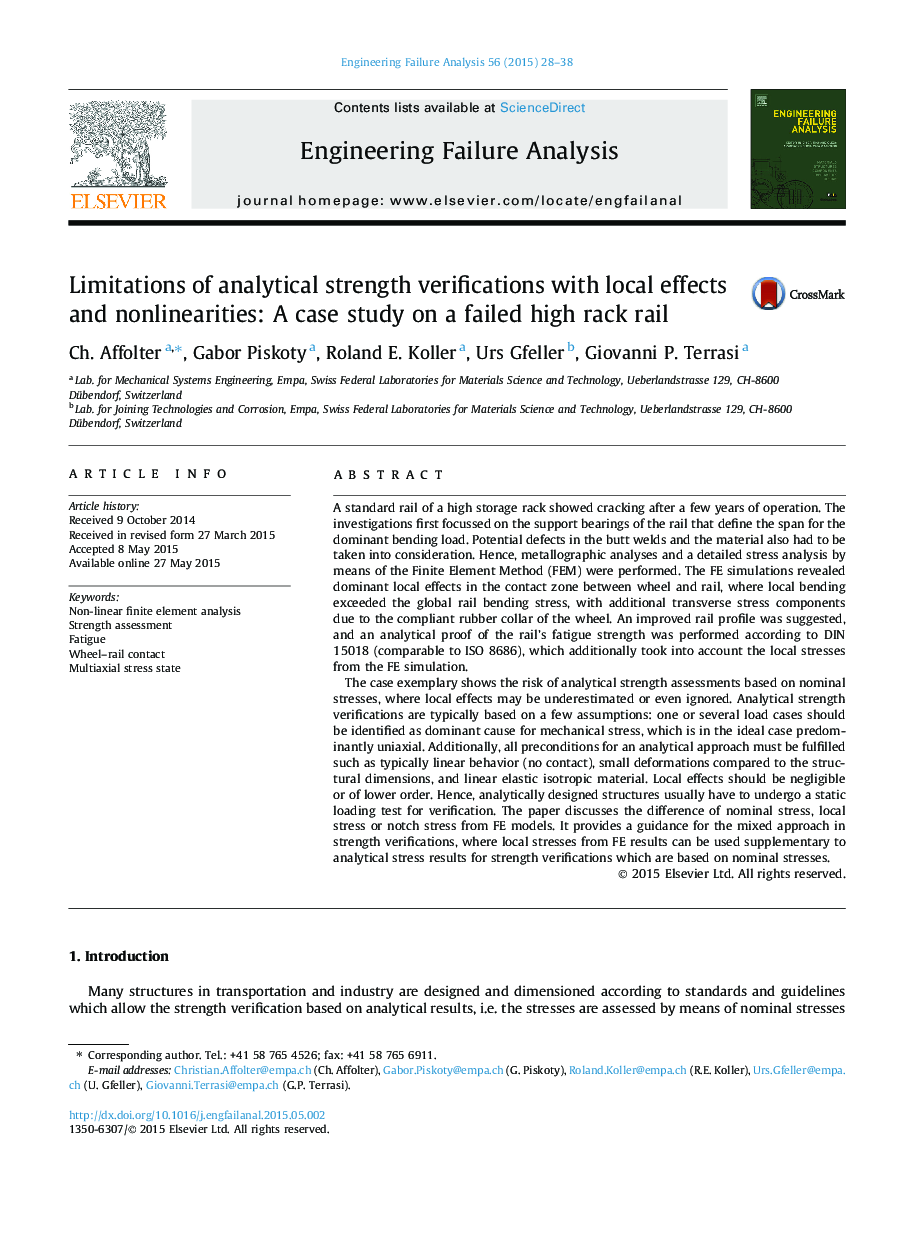| Article ID | Journal | Published Year | Pages | File Type |
|---|---|---|---|---|
| 768274 | Engineering Failure Analysis | 2015 | 11 Pages |
•Cracks in the rail of a high rack could be explained with the underdesigned rail.•The strength assessment based on nominal stresses was extended with FEM-results.•A seemingly simple bending load case resulted in a multiaxial stress state.•Guidelines for a combined fatigue assessments are given (nominal stress and FEM).
A standard rail of a high storage rack showed cracking after a few years of operation. The investigations first focussed on the support bearings of the rail that define the span for the dominant bending load. Potential defects in the butt welds and the material also had to be taken into consideration. Hence, metallographic analyses and a detailed stress analysis by means of the Finite Element Method (FEM) were performed. The FE simulations revealed dominant local effects in the contact zone between wheel and rail, where local bending exceeded the global rail bending stress, with additional transverse stress components due to the compliant rubber collar of the wheel. An improved rail profile was suggested, and an analytical proof of the rail’s fatigue strength was performed according to DIN 15018 (comparable to ISO 8686), which additionally took into account the local stresses from the FE simulation.The case exemplary shows the risk of analytical strength assessments based on nominal stresses, where local effects may be underestimated or even ignored. Analytical strength verifications are typically based on a few assumptions: one or several load cases should be identified as dominant cause for mechanical stress, which is in the ideal case predominantly uniaxial. Additionally, all preconditions for an analytical approach must be fulfilled such as typically linear behavior (no contact), small deformations compared to the structural dimensions, and linear elastic isotropic material. Local effects should be negligible or of lower order. Hence, analytically designed structures usually have to undergo a static loading test for verification. The paper discusses the difference of nominal stress, local stress or notch stress from FE models. It provides a guidance for the mixed approach in strength verifications, where local stresses from FE results can be used supplementary to analytical stress results for strength verifications which are based on nominal stresses.
